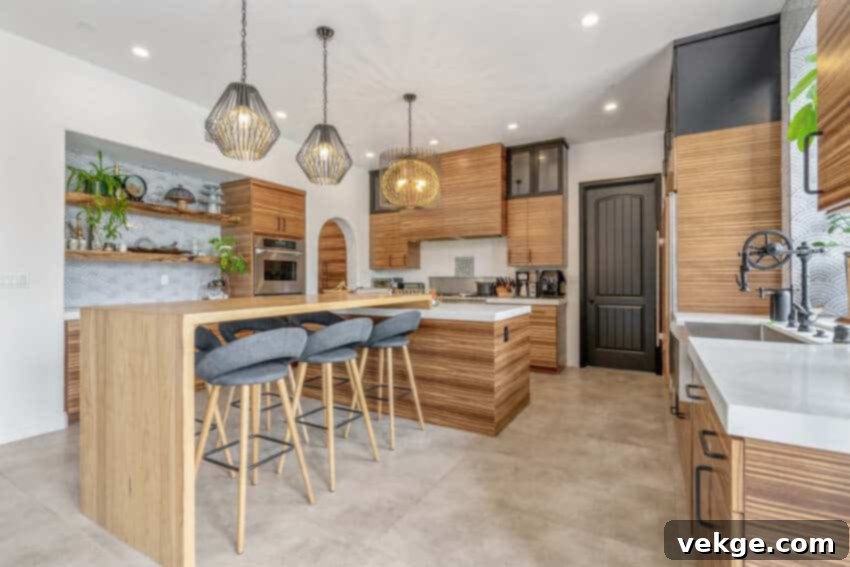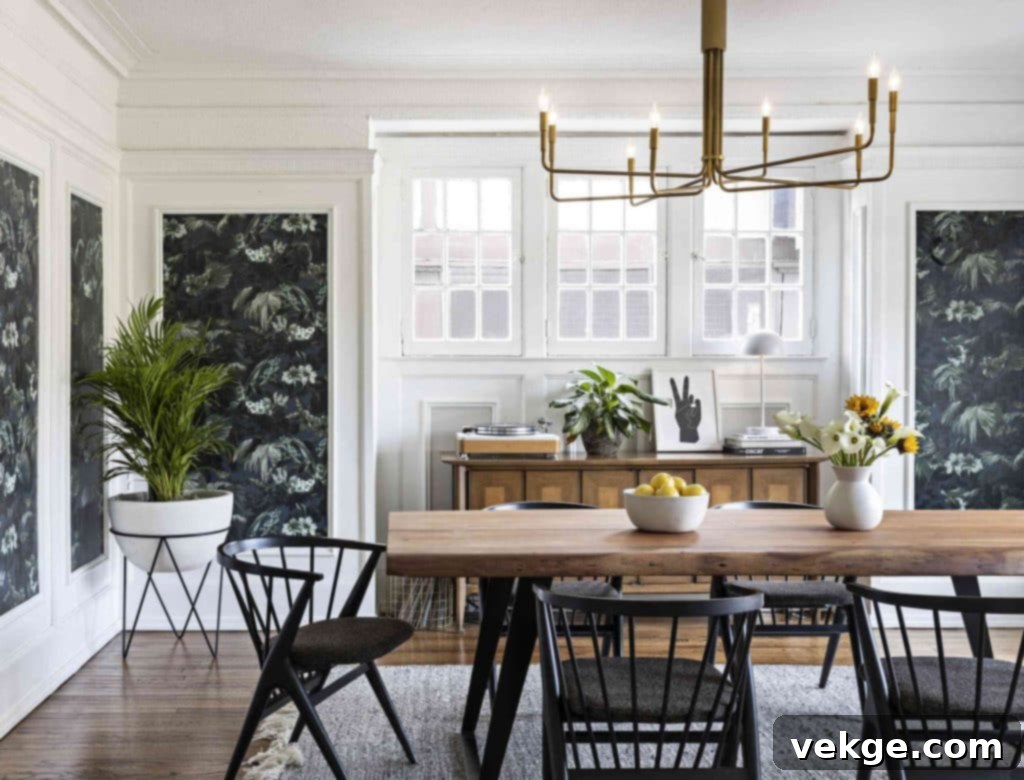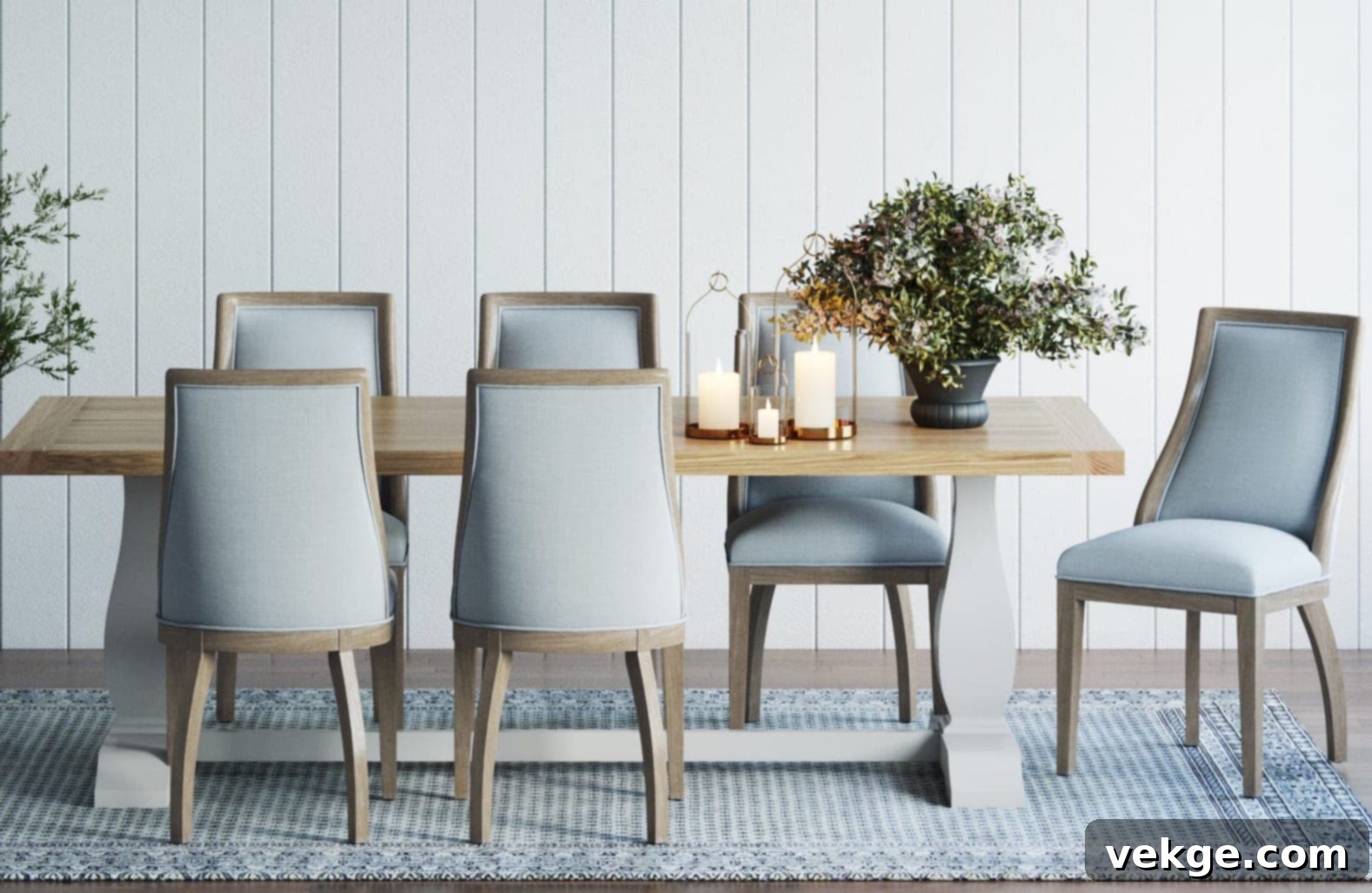The Ultimate Guide to Choosing the Perfect Dining Table and Chairs for Your Home
The dining room is more than just a place to eat; it’s the vibrant heart of your home, a dedicated space where family and friends gather to share delicious meals, heartfelt conversations, and create lasting memories. Selecting the right dining table and chairs isn’t merely about furnishing a room; it’s about curating an environment that’s both inviting and exceptionally functional, tailored to your unique lifestyle and aesthetic preferences.
However, the sheer variety of styles, materials, shapes, and sizes available can make the process of finding your ideal dining set feel overwhelming. With countless options, it’s easy to get lost in the details. Fear not! This comprehensive guide is designed to simplify your journey, providing you with all the essential knowledge and expert tips needed to choose a dining set that perfectly complements your home’s décor, meets your practical needs, and reflects your personal style.
Planning Your Perfect Dining Space: Essential Considerations Before You Buy

Before you dive into the exciting world of dining furniture, it’s crucial to take a strategic step back and thoroughly assess your dining area and lifestyle. A thoughtful evaluation of these key factors will lay the groundwork for making informed decisions:
1. Space Assessment: Measure Twice, Buy Once
- Dimensions: Accurately measure the length and width of your dining room. This is perhaps the most critical step. You need to determine the maximum realistic dimensions for your dining table and chairs.
- Clearance: Beyond fitting the furniture, ensure there’s ample space for comfortable movement. A general rule of thumb is to allow at least 36-42 inches (90-105 cm) of clearance between the edge of your dining table and any walls or other furniture. This allows chairs to be pulled out easily and people to walk around without feeling cramped. For heavy traffic areas, consider even more space.
- Room Shape: The architectural layout of your dining room will significantly influence the ideal table shape.
2. Table Shape: Optimizing for Aesthetics and Flow
Different table shapes offer unique advantages:
- Rectangular Tables: The most classic and versatile choice, ideal for larger, elongated dining rooms. They can seat a greater number of guests efficiently and are perfect for formal dinners.
- Round Tables: Excellent for fostering intimacy and conversation, as everyone is equidistant from each other. They work exceptionally well in smaller or square-shaped rooms and can make a space feel more open and less formal.
- Oval Tables: Offer the seating capacity of a rectangular table but with the softer lines of a round one, creating a more flowing aesthetic. They are a great choice for narrow rooms where sharp corners might impede movement.
- Square Tables: Best suited for square dining rooms or smaller spaces, typically seating 2-4 people. Larger square tables can sometimes feel too expansive in the center.
3. Home Style and Aesthetic: Harmonizing Your Décor
- Overall Vibe: Consider the existing aesthetic of your home. Do you gravitate towards a modern, minimalist look, a cozy traditional feel, a rustic farmhouse charm, an industrial edge, or an eclectic blend of styles?
- Cohesion: Your dining table and chairs should not only stand out but also seamlessly integrate with your existing décor. Look for pieces that share common elements in terms of color palette, materials, or design lines to create a cohesive and inviting atmosphere.
4. Seating Capacity: Current Needs vs. Future Possibilities
- Everyday Use: How many people typically dine in your household? Choose a table size that comfortably accommodates your immediate family for daily meals.
- Hosting Needs: Don’t forget about future needs or occasional gatherings. Do you frequently host dinner parties or family holidays? An extendable dining table might be a wise investment, providing flexibility without consuming extra space on a daily basis.
- Per-Person Space: Allow approximately 24-30 inches (60-75 cm) of table edge per person for comfortable dining.
5. Functionality and Lifestyle: Durability Meets Practicality
- Everyday vs. Formal: Will your dining set be subjected to daily family use, including homework and casual meals, or is it primarily for more formal occasions? This will influence your choices regarding material durability and ease of cleaning.
- Extendable Options: As mentioned, an extendable table is ideal for those who love to host but have limited space.
- Chair Use: Will the chairs only be used for dining, or do you anticipate them being pulled into other rooms for extra seating during parties? Consider their weight and versatility.
Beyond the Matched Set: Finding Harmony in Diverse Dining Furniture
While traditional, perfectly matched dining sets offer a cohesive and often elegant look, modern interior design embraces individuality and creative combinations. Don’t feel limited to an identical pairing! Here’s how to create a stylish, functional, and uniquely personal dining area even if your table and chairs aren’t a pre-packaged set:
1. Mix Materials: Adding Depth and Texture
Introducing different materials is an excellent way to create visual interest and prevent your dining area from looking one-dimensional.
- Wood and Upholstery: Pair a robust wooden table (e.g., solid oak, walnut) with upholstered chairs in fabric, leather, or velvet for a touch of comfort and luxury.
- Metal Accents: Combine a warm wooden table with chairs featuring sleek metal legs or industrial-style metal frames to add a modern, edgy touch.
- Woven Textures: A glass or stone-top table can be beautifully contrasted with chairs featuring woven rattan, cane, or wicker seats and backs, bringing an organic and airy feel.
2. Play with Color: Injecting Personality
Color is a powerful tool to express personality and define your dining space.
- Neutrals with Pops: Neutrals (greys, whites, beiges, natural wood tones) are always a safe and sophisticated bet for the table. Don’t be afraid to introduce vibrant pops of color with your chairs – perhaps a set of emerald green, deep blue, or mustard yellow chairs.
- Complementary Colors: Use the color wheel to select chair colors that complement your table and overall room palette, creating a harmonious yet dynamic look.
- Bold Contrast: For a dramatic effect, opt for chairs in a color that sharply contrasts with your table, making both elements stand out.
- Varying Shades: You can even use chairs of the same style but in different shades of the same color or a curated selection of complementary colors for an eclectic, curated feel.
3. Style Synergy: Unifying Mismatched Pieces
Even with mismatched dining table and chairs, aim for pieces that share some underlying design elements or a common theme to ensure visual cohesion. This creates a sense of intentional design rather than random selection.
- Echoing Shapes: If your table has curved legs or a rounded edge, look for chairs with a similar soft silhouette or curved backrests. Conversely, a table with strong, straight lines might pair well with chairs featuring geometric patterns or angular designs.
- Shared Era/Theme: Mix and match pieces from the same general design era (e.g., mid-century modern, Scandinavian) or a similar design philosophy, even if their materials differ.
- Consistent Scale: Ensure the scale and proportion of your chairs are appropriate for your table. Overly bulky chairs can overwhelm a delicate table, and vice-versa.
Key Considerations: Diving Deep into Table and Chair Features
Once you have a general idea of the style and layout, it’s time to delve deeper into the specific features that will impact comfort, durability, and aesthetics of your chosen dining set.
1. Table Height and Size: The Foundation of Comfort
- Standard Height: The typical dining table height ranges from 28 to 30 inches (71-76 cm). It’s crucial that your chairs comfortably fit under this height.
- Apron Clearance: If your table has an apron (the wooden frame connecting the legs), measure the distance from the floor to the bottom of the apron. Ensure there’s enough clearance for your thighs when seated.
- Length and Width: As discussed, this relates directly to seating capacity and room dimensions. For a comfortable setup, each diner typically requires 24-30 inches (60-75 cm) of table length. A standard table width of 36-40 inches (90-100 cm) usually allows enough space for food and place settings.
2. Chair Height and Comfort: Ergonomics for Enjoyment
- Seat Height: For optimal comfort, the chair seat should typically be about 10-12 inches (25-30 cm) lower than the tabletop. This ensures adequate legroom and allows you to sit comfortably without hitting your knees.
- Seat Depth: Aim for a seat depth that allows most people to sit with their backs against the backrest while their feet are flat on the floor, leaving a couple of inches between the back of their knees and the edge of the seat.
- Back Support: Sit in various chairs to test the back support. Do you prefer a high back, low back, or an ergonomically contoured design?
- Armrests: If choosing chairs with armrests, ensure they can easily slide under your dining table’s apron or tabletop without getting stuck. Measure the height of the armrests from the floor.
3. Table Material: Durability, Style, and Maintenance
The material of your dining table plays a huge role in its look, feel, and longevity:
- Solid Wood: Timeless, durable, and can be refinished. Popular choices include oak, walnut, maple, and cherry. Requires care to prevent scratches and water rings.
- Wood Veneer/Engineered Wood: More affordable than solid wood, offering the look of natural wood. Can be durable if high quality, but can’t be easily refinished.
- Glass: Creates an open, airy feel, making small spaces appear larger. Easy to clean but can show fingerprints and scratches. Tempered glass is essential for safety.
- Stone (Marble, Granite, Quartz): Luxurious and extremely durable, heat-resistant. Can be heavy and expensive, and porous stones like marble require sealing and careful cleaning to prevent stains.
- Laminate/Melamine: Highly durable, scratch-resistant, and easy to clean, often at a lower price point. Offers a wide range of looks, mimicking wood or stone.
- Metal: Modern, industrial, and highly durable. Often used for table bases with various tops. Can be cold to the touch.
4. Chair Material: Comfort, Maintenance, and Aesthetic Appeal
Your chair material choice impacts both comfort and practical upkeep:
- Upholstered Chairs: Offer superior comfort and a touch of luxury. Available in a vast array of fabrics (velvet, linen, cotton) and leathers, allowing for endless customization. Consider stain-resistant fabrics or removable covers for ease of cleaning, especially in active households.
- Solid Wood Chairs: Classic, sturdy, and can complement various table materials. Durable and easy to clean, though may require cushions for prolonged comfort.
- Metal Chairs: Industrial, modern, and very durable. Often lightweight and easy to clean, but can be less comfortable without seat pads.
- Plastic/Acrylic Chairs: Contemporary, lightweight, and incredibly easy to clean. Perfect for casual dining or families with children. Can come in a variety of colors and transparent finishes.
- Rattan/Wicker: Adds a natural, bohemian, or coastal vibe. Lightweight and often durable, suitable for both indoor and covered outdoor dining.
Pro Tips for a Picture-Perfect and Functional Dining Set

Beyond the core furniture pieces, these additional tips will help you elevate your dining space from simply functional to truly picture-perfect and inviting:
- Area Rug: Defining the Zone: A well-chosen area rug can anchor your dining space, add warmth, and introduce texture or color. Ensure the rug is large enough to comfortably fit the table and all chairs, even when they are pulled out from the table. As a general guide, the rug should extend at least 24-36 inches (60-90 cm) beyond the table’s edge on all sides. Consider easy-to-clean materials like wool or synthetic blends.
- Lighting: Setting the Mood: Adequate and appropriate lighting is crucial for both functionality during meals and creating ambiance.
- Chandelier/Pendant: A statement chandelier or a series of pendant lights hung above the table serves as a focal point. Ensure it’s hung approximately 30-36 inches (75-90 cm) above the tabletop to avoid obstructing views.
- Dimmers: Install dimmers to adjust the light intensity, allowing you to transition from bright task lighting for everyday meals to soft, intimate lighting for dinner parties.
- Sconces/Lamps: Consider adding wall sconces or a buffet lamp for ambient lighting that softens the overall glow.
- Centerpiece: The Finishing Touch: Dress up your dining table with a beautiful centerpiece that reflects your style and adds personality. This could be:
- A fresh vase of flowers or greenery for a touch of nature.
- A curated collection of candles of varying heights for warmth and ambiance.
- A decorative bowl of fresh fruit or seasonal decor for a pop of color.
- Avoid overly tall centerpieces that obstruct conversation across the table.
- Seating for Different Needs: Versatile Options: If space allows, consider incorporating a mix of seating styles for added versatility and visual interest.
- Dining Bench: A dining bench on one side of the table can be a space-saver, allowing more people to squeeze in, and creates a more casual, communal vibe.
- Armchairs: Placing upholstered armchairs at the heads of the table can add a touch of formality and comfort, distinguishing them from the side chairs.
- Stools/Ottomans: For counter-height dining or bar tables, stylish stools can provide extra seating that can be tucked away when not in use.
- Wall Decor: Adding Character: Don’t overlook the walls! Artwork, mirrors, or gallery walls can enhance the dining room’s aesthetic. A large mirror can also create the illusion of more space and reflect light.
- Storage Solutions: Practicality Meets Style: Consider adding a buffet, sideboard, or hutch to your dining room. These pieces provide valuable storage for dinnerware, linens, and serving pieces, while also offering a surface for displaying decorative items or serving food buffet-style.
Elevate Your Dining Experience with Furniture in Fashion
When it comes to creating the perfect dining space – one that blends impeccable style, enduring quality, and unparalleled functionality – Furniture in Fashion stands out as your ultimate partner. We understand that your dining area is a significant investment in your home’s comfort and aesthetic, which is why we are committed to offering an extensive and meticulously curated range of dining tables and chairs.
Our diverse collection provides unparalleled options to suit every taste, every home aesthetic, and every space requirement. Whether you’re drawn to the clean lines of sleek modern designs, the timeless elegance of traditional pieces, the cozy charm of farmhouse styles, or the bold statement of eclectic furniture, Furniture in Fashion offers the perfect blend of aesthetics and practicality. Each piece in our collection is thoughtfully designed to not only look stunning but also to withstand the rigors of daily life, making every meal a truly memorable occasion.
Our unwavering commitment to excellence ensures that each dining table and chair is crafted with premium materials and subjected to meticulous attention to detail. This dedication guarantees not only exceptional durability and longevity but also a sophisticated style that will enhance your home for years to come. Trust Furniture in Fashion to transform your dining space, making it a focal point of comfort, elegance, and cherished family gatherings, truly elevating your dining experience.
